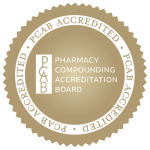What is Dermatitis?
Dermatitis is a manifestation of skin inflammation with various causes and locations on the body. It refers to a group of skin conditions that comes in many forms and shapes, hence, its many variant names: contact dermatitis, allergic dermatitis, seborrheic dermatitis, nummular dermatitis, stasis dermatitis, dyshidrotic dermatitis, discoid dermatitis, dermatitis herpetiformis, ichthyosis vulgaris, keratosis pilaris, etc.
One of the most common forms of dermatitis is atopic dermatitis or eczema.
Most forms of dermatitis are chronic conditions that have no cure. Reducing or eliminating the causative elements and managing the symptoms with medication, are at the core of therapeutic plan.
Pharmacological therapy consists of medications that belong to many different drug classes:
- Antihistamines – mainly for the itchy component
- Anti-anxiety medication – when the itch is not controlled well with antihistamines
- Corticosteroids – moderate to high potency groups – for the inflammatory component
- Moisturizers/emollients – to maintain skin hydration and barrier function
- Calcineurin inhibitors – for very severe cases that do not respond well to corticosteroids
- Antibiotics – even though the use of this class of drugs is controversial – some practitioners may decide to prescribe them in complicated cases to avoid secondary infections.
Alternative medicine may be added to the therapeutic plan and may consist of:
- Colloidal oatmeal
- Aloe Vera
- Probiotics
- Acupuncture
- Minerals and vitamins, etc.
The form, the location, the stage, the severity, and the response to treatment of the dermatitis will be different from one patient to another. Each patient will need a unique plan of treatment, may it be non-pharmacological, pharmacological or a combination of both. Thus, the treatment must be thoroughly individualized. Pharmaceutical compounding can help the dermatologist to prescribe uniquely customized medications that may contain both active pharmaceutical ingredients and plant-derived ingredients incorporated in one preparation. Pharmaceutical compounding will also allow the dermatologist to select a specialized base designed for the type of dermatitis treated, with properties to enhance the effect of the ingredients incorporated into it. Pharmaceutical compounding facilitates the use of novel ingredients that may not be otherwise available in commercially available medications. When using compounding, the patient will leave the office with one prescription for one customized medication. Otherwise, the patient might need three or four different commercial medications, each with a separate set of instructions to use. Customization, convenience, cost-effectiveness, and minimizing the side effects of oral medications, are only a few of the benefits of prescribing a compounded medication for patients with dermatitis. Additionally, the benefits to the patient will make the doctor look like a hero. Here is an example of compounded medication for dermatitis:
CLOBETASOL PROPIONATE 0.05% NIACINAMIDE 4%
SILICONE CREAM or TOPICAL SOLUTION or TOPICAL FOAM
Many customized options may be made available for most of the skin conditions when you carefully select and contact the right compounding pharmacy. For expert advice on customized solutions for your patients select and contact HALDEY Pharmaceutical Compounding. Talk to one of HALDEY’s experienced compounding pharmacists for more information about compounding for dermatology.
References:
McAleer, MA; Flohr, C; Irvine, AD (23 July 2012). “Management of difficult and severe eczema in childhood”. BMJ (Clinical research ed.). 345: e4770. doi:10.1136/bmj. e4770. PMID 22826585.
van Zuuren, Esther J; Fedorowicz, Zbys; Christensen, Robin; Lavrijsen, Adriana PM; Arents, Bernd WM (2017-02-06). “Emollients and moisturisers for eczema”. Cochrane Database of Systematic Reviews.
Boyle RJ, Bath-Hextall FJ, Leonardi-Bee J, Murrell DF, Tang ML (2008). Boyle, Robert John, ed. “Probiotics for treating eczema”. Cochrane Database of Systematic Reviews (4): CD006135. doi:10.1002/14651858.CD006135.pub2. PMID 18843705.
Carr, WW (Aug 2013). “Topical calcineurin inhibitors for atopic dermatitis: review and treatment recommendations”. Paediatric drugs. 15 (4): 303–10. doi:10.1007/s40272-013-0013-9. PMC 3715696 . PMID 23549982.
Bershad, SV (1 November 2011). “In the clinic. Atopic dermatitis (eczema)”. Annals of Internal Medicine. 155 (9): ITC51–15; quiz ITC516. doi:10.7326/0003-4819-155-9-201111010-01005. PMC 1849764 . PMID 22041966.
Bath-Hextall, FJ; Jenkinson, C; Humphreys, R; Williams, HC (15 February 2012). Bath-Hextall, Fiona J, ed. “Dietary supplements for established atopic eczema”. Cochrane Database of Systematic Reviews. 2: CD005205. doi:10.1002/14651858.CD005205.pub3. PMID 22336810. Archived from the original on 4 July 2013.




